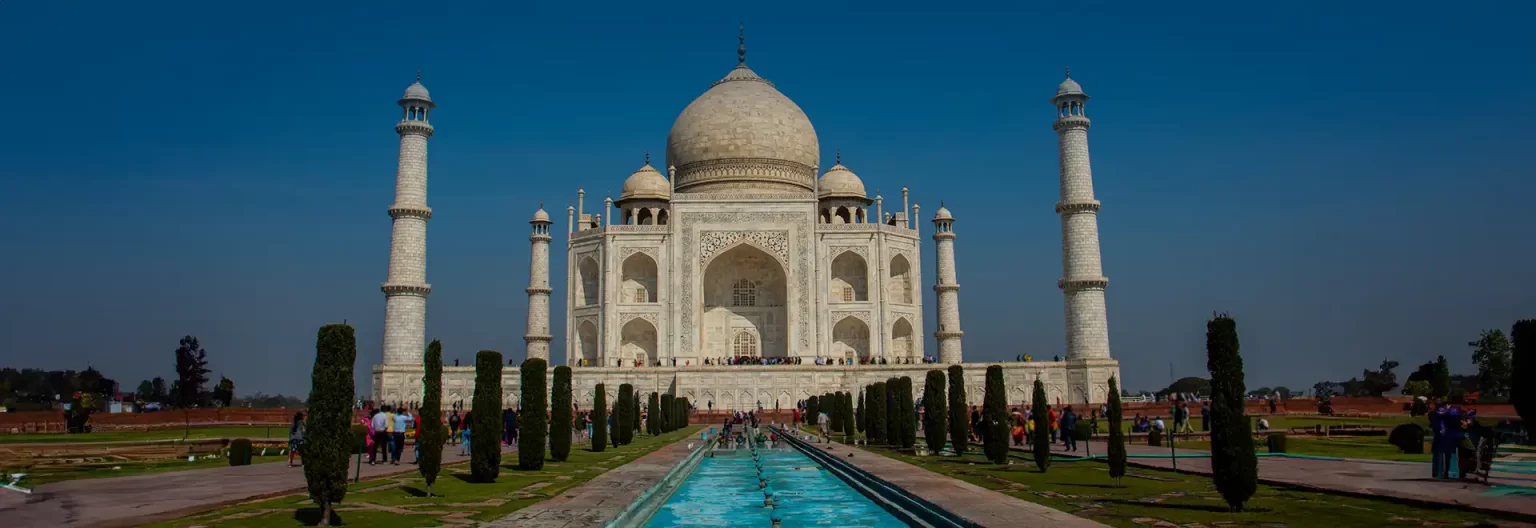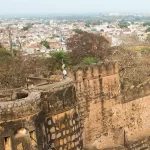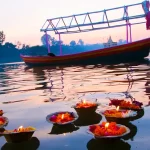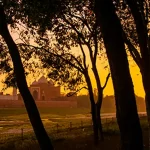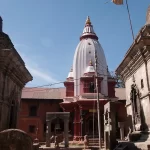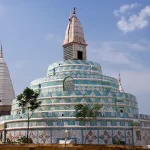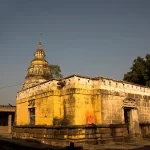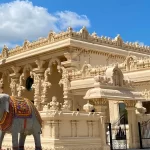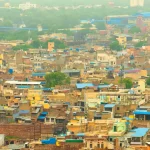Uttar Pradesh: Land of Heritage, Culture, and Diversity
Uttar Pradesh is a vibrant state in northern India, which holds immense historical, cultural, and geographical importance. The state has a population of over 240 million, making it the most populous state in India and the world’s most populous sub-national entity. Known for its rich traditions, spiritual landmarks, and delectable cuisine, UP is a destination that offers something for everyone.
Regions of Uttar Pradesh
Uttar Pradesh is divided into culturally rich regions, each offering unique attractions:
- Awadh: The heart of UP, with Lucknow as its crown jewel, is a hub of Nawabi culture and mouth watering cuisine.
- Doab: The region between the Ganges and Yamuna rivers is home to Agra, housing the world-famous Taj Mahal and other Mughal architectural marvels.
- Bundelkhand: It is a region of rolling hills and historical forts. Here lies Jhansi, known for the heroic Rani Laxmi Bai.
- Purvanchal: Eastern UP is a seat of ancient culture, with Varanasi-the holy city of India-and Sarnath, where Buddha delivered his first sermon.
- Rohilkhand: It is the north’s scenic beauty, full of plains and cultural colors.
Special Highlight : Mahakumbh 2025, Prayagraj
The Maha Kumbh Mela is celebrated as the world’s largest peaceful gathering, deeply rooted in Indian tradition and spirituality. This grand festival represents humanity’s eternal quest for divine connection and liberation from the cycle of birth, death, and rebirth. Millions of pilgrims converge at the confluence of the sacred rivers—Ganga, Yamuna, and the mystical Saraswati—to take a holy dip, which is believed to cleanse the soul and pave the way to Moksha (spiritual liberation). The Maha Kumbh Mela reflects faith, unity, and devotion, making it a cornerstone of India’s cultural and religious heritage.
The Maha Kumbh Mela 2025 is particularly special due to its rarity, occurring only once every 144 years. This extraordinary event is further enriched by an enhanced celestial configuration, with the alignment of planets considered exceptionally favorable for spiritual enlightenment and growth. Such a rare combination of divine timing makes the 2025 Maha Kumbh a profoundly auspicious occasion, drawing millions of devotees, saints, and spiritual seekers from around the world to Prayagraj for this unparalleled celebration of faith and tradition.
Tourist Destinations in Uttar Pradesh
Uttar Pradesh is a state filled with wonders, ranging from ancient temples and architectural marvels to serene wildlife sanctuaries. Here are more remarkable destinations that highlight its diversity:
1. Kushinagar
Kushinagar is one of the world’s four most sacred Buddhist pilgrimage places. It is believed to have been the location where Lord Buddha, after his death, entered Mahaparinirvana or final salvation.
- Highlights: The Mahaparinirvana Temple features a reclining Buddha statue, sculpted in red sandstone. Other attractions are the cremation site of the Buddha at the Ramabhar Stupa and ancient ruins of monasteries which give insight into India’s rich Buddhist history.
2. Chitrakoot
The land of divine beauty is deeply connected to the Ramayana as this is where Lord Rama, Sita, and Lakshmana spent the better part of their exile.
- Highlights: Kamadgiri Hill is believed to be the abode of Lord Rama. Bharat Milap Temple is a place that commemorates the visit of Bharat to persuade Rama to return. The Ramghat is located along the Mandakini River. Ashrams and landscapes are also peaceful.
3. Vrindavan and Mathura
Mathura is the birthplace of Krishna, and Vrindavan is the place of his youthful pastimes. These are the twin cities of Krishna’s divine play.
- Highlights: Vrindavan, the city features some of its most famous landmarks, including the Banke Bihari Temple, Prem Mandir, and ISKCON Temple. For Mathura, it is well known for hosting the Krishna Janmabhoomi Temple and Dwarkadhish Temple. The cities just come alive and become a memorable sight on Holi celebrations.
4. Sarnath
Among the holiest sites of Buddhism is Sarnath, the first sermon Buddha ever preached after becoming enlightened.
- Highlights: The Dhamek Stupa is the place where Buddha delivered his sermon, and the Ashokan Pillar is a symbol of Emperor Ashoka’s dedication to Buddhism. The Sarnath Museum contains a great collection of Buddhist artifacts, such as the Lion Capital of Ashoka, which is India’s national emblem.
5. Ayodhya
Ayodhya is the birthplace of Lord Rama, an important site in Hindu mythology and spirituality.
- Highlights: The Ram Janmabhoomi Temple is the most important place of worship, which attracts millions of devotees. Other notable places are Hanuman Garhi, Kanak Bhawan, and Treta Ke Thakur. The Saryu River provides a peaceful background, especially in the evening during aarti ceremonies.
6. Jhansi
Jhansi is synonymous with the bravery and valor of Rani Laxmi Bai, who played a pivotal role in India’s first war of independence in 1857.
- Highlights: The Jhansi Fort is a heritage marvel that also provides panoramic views of the city. The Rani Mahal was her palace. Jhansi also serves as a gateway to the historic Bundelkhand region.
7. Fatehpur Sikri
Fatehpur Sikri was founded by Emperor Akbar as a Mughal capital, abandoned later. A UNESCO World Heritage Site, Fatehpur Sikri is one of the jewels of Mughal architecture.
- Highlights: Key attractions are the Buland Darwaza, Panch Mahal, Diwan-i-Khas, and the tomb of Sufi saint Salim Chishti, who is revered by followers of all religions.
8. Jaunpur
Jaunpur, famous for Indo-Islamic architecture and historic significance, was an important center of culture under the Sharqi dynasty.
- Highlights: Atala Masjid and Jama Masjid are fine architectural achievements. Shahi Bridge on Gomti River is another major attraction which displays Mughal engineering at its best.
9. Bithoor
Bithoor, near Kanpur, is considered sacred in Hindu mythology as the birthplace of Lav and Kush, the sons of Lord Rama.
- Highlights: Key attractions include Brahmavart Ghat, believed to be the site of Lord Brahma’s creation, and Valmiki Ashram, where the Ramayana was composed. The serene ghats and temples make Bithoor a tranquil retreat.
10. Dudhwa National Park
This wildlife sanctuary is a nature lover’s paradise and a component of Project Tiger.
- Highlights: Spread over 490 square kilometers, the sanctuary covers tigers, leopards, swamp deer, and a large number of migratory birds. The nearby Kishanpur Wildlife Sanctuary adds to its appeal.
11. Sankisa
Sankisa is a very significant Buddhist site where the Buddha is said to have descended from heaven after preaching to his mother.
- Highlights: Archaeological remains, especially stupas, and a colossal elephant capital make this place alluring to any pilgrimage of history.
Culture Heritage
Culture in Uttar Pradesh is a multi-dimensional tapestry of music, dance, and art, giving birth to numerous literature works.
- Kathak: Originated in the state, kathak is that traditional dance which projects its stories into the audiences.
- Handicrafts: The crafts in the State are Chikan embroidery, zardozi from Uttar Pradesh, the brassware manufactured in Moradabad, and carpets from Bhadohi.
- Festivals: Diwali in Ayodhya, Ramleela performances and Holi in Barsana, UP.
Food in Uttar Pradesh
As varied as the culture of Uttar Pradesh, is its cuisine.
- Lucknowi Cuisine: Galouti kebabs; Lucknowi Nihari, Lucknowi Biryani.
- Street Food: Chaat at Kanpur, Kachoris at Mathura, Lassi at Varanasi.
- Traditional Sweets: Mathura peda, Banarasi thandai, gujiya.
Nature and Wildlife
Uttar Pradesh was no less interesting when its wildlife was concerned. Sanctuaries and parks were here with immense natural beauty.
- Pilibhit Tiger Reserve: It is most famous for the conservation of tigers.
- Nawabganj Bird Sanctuary: The destination is mainly a home for birdwatchers, besides it holds migratory and resident birds.
Historical and Religious Significance
Uttar Pradesh is at the heart of India’s spiritual and political history:
It was a place of birth for the Vedic civilization, and it was here that two major religions, Buddhism and Jainism, were born.
The marks of Mughal and British periods remain imprinted in the architecture and synthesis of culture.
Getting There and Around
Uttar Pradesh is very well connected through air, rail, and road:
- Air: International airports at Lucknow, Varanasi, Ayodhya, and Kushinagar are gateways for international tourists.
- Rail and Road: Uttar Pradesh has a vast network of railways and highways that connect all parts of the state with the neighboring regions seamlessly.
Travel Tips and Safety
Respect the local customs and traditions, especially at religious sites.
Plan visits during major events such as Maha Kumbh well in advance in order to avoid logistical challenges.
Uttar Pradesh is a place where the past meets the present, and spirituality meets culture. From the serene ghats of Varanasi to the majestic Taj Mahal and the grand Maha Kumbh Mela, the state offers unforgettable experiences that celebrate India’s soul.

